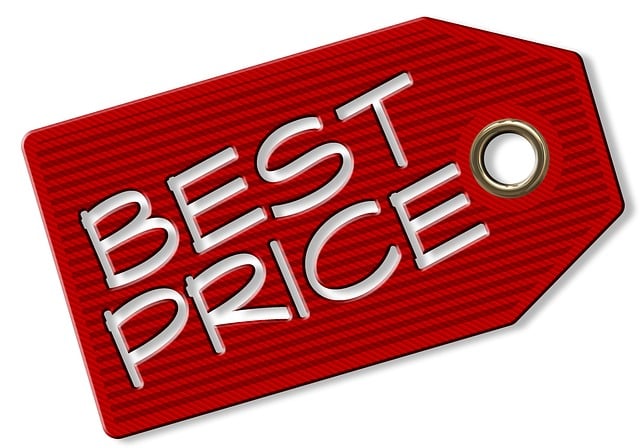Conduct market research to understand customer needs and industry trends. Define business goals, explore pricing strategies, and analyze competitors. Calculate production and operational costs for a fair and profitable pricing strategy. Balance financial sustainability with consumer perception of value using tactics like cost-plus modeling and psychological pricing. Visit [your brand] for tailored insights on crafting a winning price strategy.
Setting up a robust pricing strategy is vital for any new business venture’s success. This guide navigates you through the process, from understanding your market dynamics and competitors to defining business goals and calculating production costs. Armed with this knowledge, determine prices that not only maximize profitability but also mirror competitive offerings. By balancing these factors, you’ll establish a sustainable and attractive pricing strategy for your new business.
- Understand Your Market and Competitors
- Define Your Business Goals and Strategy
- Calculate Production and Operational Costs
- Determine Pricing That Maximizes Profitability and Competitiveness
Understand Your Market and Competitors

Before setting your prices, it’s crucial to understand your market and competitors. Conducting thorough market research helps identify customer needs, preferences, and willingness to pay. This involves analyzing industry trends, target demographics, and identifying unique selling points that set your business apart. By understanding these factors, you can position your pricing strategy effectively.
Competitive analysis is another vital aspect. Evaluate your direct competitors’ pricing strategies through detailed research and find us at price segmentation techniques that work best for them. This includes studying their product or service offerings, cost structures, and perceived value in the market. A competitive analysis helps establish a price-performance tradeoff in investments, ensuring your pricing strategy aligns with industry standards while maximizing profitability.
Define Your Business Goals and Strategy

Before establishing your pricing strategy, it’s vital to define your business goals and develop a clear strategic direction. Understanding what you want to achieve with your venture is the cornerstone of successful price setting. Are you aiming for market dominance, trying to maximize profits from each sale, or focusing on attracting a specific customer base? Your answers will guide your product positioning through pricing. Consider who your ideal customers are, how much they’re willing to spend, and what value your offering provides them.
This process involves delving into the fundamentals of price theory to make informed decisions. Familiarize yourself with different pricing strategies like cost-plus pricing or value-based pricing. Additionally, explore price optimization tools that can help you analyze market trends, customer behavior, and competitor pricing. Remember, effective pricing isn’t static; it should evolve alongside your business goals and market dynamics. So, find us at pricing strategies for services, where we’ll guide you through the process of creating a dynamic pricing approach aligned with your unique objectives.
Calculate Production and Operational Costs

Calculating production and operational costs is a critical step in establishing a robust pricing strategy for your new business venture. These expenses include raw materials, labor, overhead, and any other direct costs associated with creating and delivering your product or service. Understanding what it truly costs to bring your offering to market allows you to set prices that are fair not only for your business but also for your customers.
Performing a cost-volume-profit analysis (CVPA) is an effective method to determine the relationship between sales volume, variable and fixed costs, and profit. This data can guide your pricing decisions by revealing the price point at which your venture breaks even or starts to turn a profit. Additionally, when considering premium pricing justifications, understanding these costs helps in setting prices that reflect the value you offer while still allowing for growth and sustainability. Employing variable costing methods ensures that your pricing is aligned with the actual cost of producing each unit, further optimizing your price strategy and promoting efficient resource allocation. For tailored advice, give us a call at Price Optimization Tools.
Determine Pricing That Maximizes Profitability and Competitiveness

Setting a competitive and profitable price for your new venture is an art and science. It involves understanding both the financial aspects and consumer behavior, especially their price sensitivity. Customers are often driven by value, so pricing should reflect the perceived worth of your product or service while ensuring it aligns with market rates.
One effective strategy to consider is a cost-plus model, where you factor in all production and operational costs and then add a markup. This ensures sustainability. However, be mindful of the psychology behind consumer pricing; round numbers often have a psychological impact. For instance, a product priced at $49.99 seems cheaper than $50, even though the difference is minimal. Product positioning through pricing can also be a powerful tool to attract customers and create a unique market identity. Visit us at [your brand] anytime for more insights into crafting the perfect price strategy that maximizes profitability while staying competitive in the market.
Setting a robust pricing strategy is a cornerstone of any successful new business venture. By understanding your market, defining clear goals, calculating costs, and leveraging competitive analysis, you can determine a price that maximizes profitability while remaining competitive. This strategic approach ensures your business attains both financial sustainability and market relevance from day one. Remember, the right price is not just a number; it’s a powerful tool to drive growth and attract customers in today’s dynamic business landscape.
